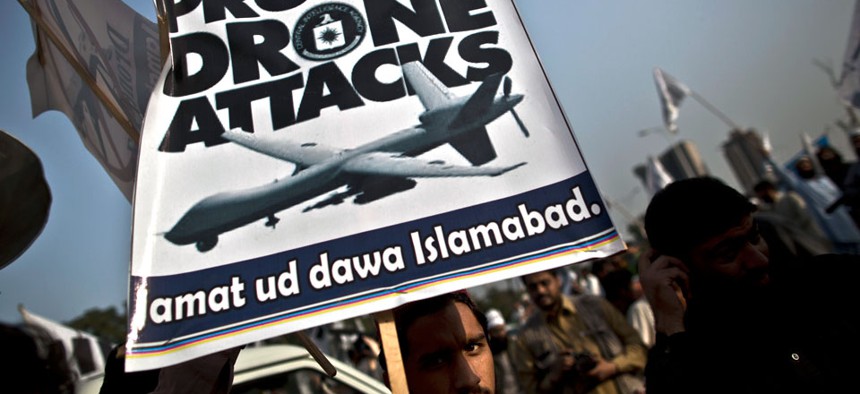UN Drone Investigator: U.S. Must Explain Civilian Deaths
States have a duty to protect civilians—and that requires transparency when they're hurt or killed, says report.
After a year long study of the use of drones to kill people, UN Special Rapporteur on Human Rights Ben Emmerson has released his final report. It's a manageable read at 22 pages. The summary by NYU's Sarah Knuckey is the next best thing.
The report documents 30 instances where there were credible reports of civilians being harmed by drone strikes, some of them already controversial, others lesser known.
More than 300 alleged deaths are discussed.
The report isn't anti-drone in principle. "If used in strict compliance with the principles of international humanitarian law," the conclusion states, "remotely piloted aircraft are capable of reducing the risk of civilian casualties in armed conflict by significantly improving the situational awareness of military commanders."
But Emmerson's report regards the United States and perhaps other states that have launched lethal drone strikes as derelict in their longstanding obligation to protect civilians. Right now, when innocents are killed, there is neither an inquiry nor an explanation:
Having regard to the duty of States to protect civilians in armed conflict, the Special Rapporteur considers that, in any case in which civilians have been, or appear to have been, killed, the State responsible is under an obligation to conduct a prompt, independent and impartial fact-finding inquiry and to provide a detailed public explanation. This obligation is triggered whenever there is a plausible indication from any source that civilian casualties may have been sustained, including where the facts are unclear or the information is partial or circumstantial. The obligation arises whether the attack was initiated by remotely piloted aircraft or other means, and whether it occurred within or outside an area of active hostilities.
Asserting that obligation is core to the report. "In essence, the report states that it is governments who now bear the legal burden of explaining the strikes," Knuckey writes. The report also recommends that the UN "set-up a panel of experts to discuss and report on the legal issues raised by the use of drones for targeted killings."
For most members of the public, the most valuable part of the report will be the website created to accompany it. As refreshingly succinct as the report itself, it also includes videos that afford a glimpse into the forensic reconstruction of drone strikes undertaken in the course of this study. In one instance, very limited footage smuggled out of Pakistan by NBC News and aired on The Rachel Maddow Show was used to deduce a surprising amount of informationabout a drone strike.
Other videos showed interviews with witnesses of drone strikes.
The most notable thing about this clip is the several witnesses who report that after the initial drone strike attracted locals intent on seeing what happened, the unmanned aircraft circled back around for another round of bombardment that killed innocents:
There is lot's more of interest on the aforementioned website, which merits exploration if you're someone keen on a detailed understanding of semi-targeted killing.
NEXT STORY: The White House Has Four Options For NSA Reform




